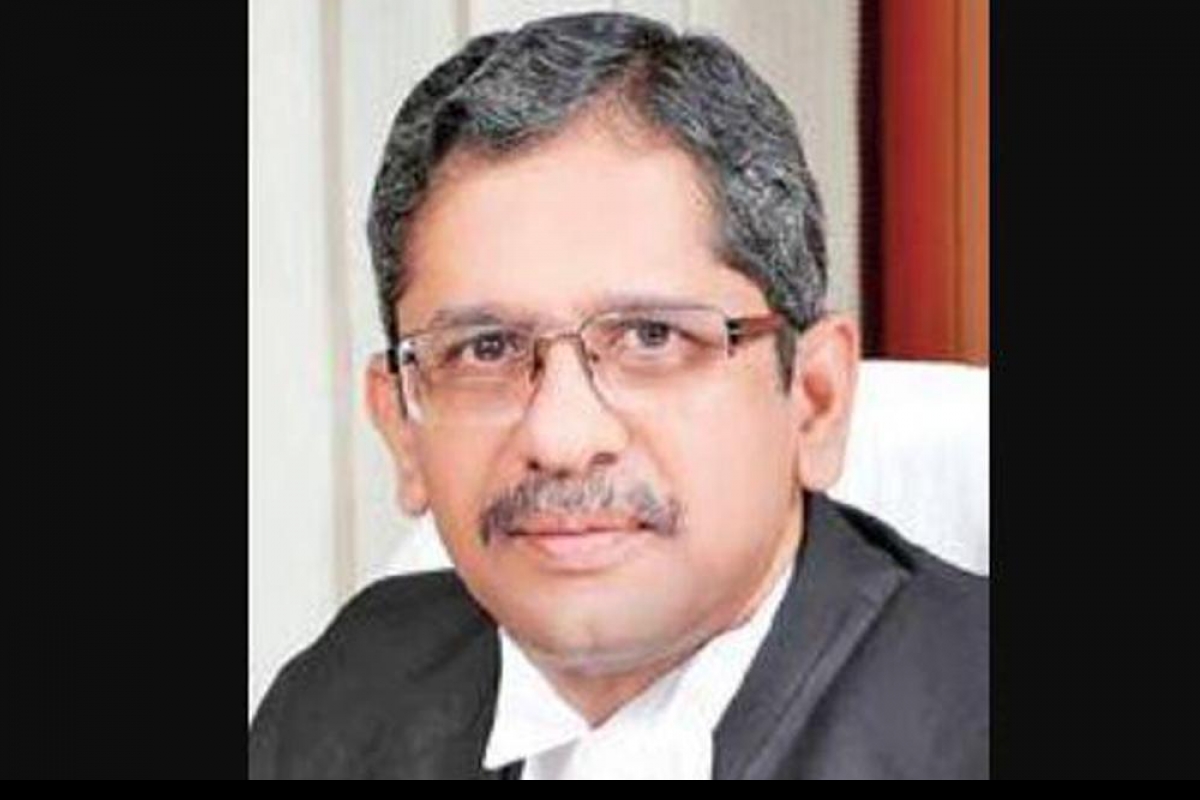Give priority to cases of poor undertrials: PM to CMs, CJs
Modi said the government was working hard to reduce delays in justice delivery as efforts were on to increase judicial strength and improving judicial infrastructure.
Delivering his keynote address at the India-Singapore mediation summit, CJI N V Ramana said that the British eroded the resolution mechanism through the establishment of the British Court System in 1775,

Chief Justice of India N V Ramana (Photo: Twitter)
Mediation is deeply embedded in Indian ethos and was prevalent in India much before the arrival of the British, Chief Justice of India N V Ramana said on Saturday pointing out how Indian epic Mahabharata provided an early example of an attempt at mediation. The CJI said that mediation being the cheapest and simplest option available to the public at large, it can be described as a tool of social justice in the Indian context.
Delivering his keynote address at the India-Singapore mediation summit “Making Mediation mainstream: Reflections from India and Singapore”, Chief Justice said, India is home to many identities, religions, and cultures that contribute to its unity through diversity, and this is where the rule of law, with an assured sense of justice and fairness, come into play. “Mediation… can be described as a tool of social justice in the Indian context. Such a party-friendly mechanism ultimately upholds the rule of law, by providing an incentive for parties to utilize their autonomy to the fullest to arrive at a just and equitable outcome”, said the Chief Justice.
He said Mahabharat, is an example of an early attempt at mediation as a conflict resolution tool, where Lord Krishna attempted to mediate the dispute between the Pandavas and Kauravas. It may be worthwhile to recall that the failure of mediation in Mahabharat led to disastrous consequences, he cited.
Advertisement
Chief Justice emphasized mediation, as a concept, is deeply embedded into the Indian ethos, long before the arrival of the British adversarial system in India. “The establishment of the British courts system, in 1775, marked the erosion of community-based indigenous dispute resolution mechanisms in India. The British judicial system has ultimately become the framework, with appropriate modifications, for the current judicial system in India”, said Chief Justice.
He also took strong objection to the statistics regarding pendency and added that it is often stated there are 45 million pending cases and it’s said because courts cannot handle it. “It is an uncharitable analysis. Cases filed yesterday get added to the list and thus are not a useful indicator to see how well a system is doing. Issue of judicial delays is a complex problem and just not in India,” he opined.
The Chief Justice emphasized the need for training sessions for mediators, as the role has evolved from a passive facilitator to a role involving advisory participation. “Pilots are needed to undergo training every year where they are given multiple scenarios on how to land. Mediators need to go through such training so that innovation can be brought on board,” he added.
Justice Ramana insisted that a mediator must be ‘neutrality’ and ‘aloofness’ during the process. Citing various scenarios, he added, what happens when one party is better situated- economically, socially, and politically, than the other? What is the duty of a mediator if the settlement reached is patently unjust to the weaker party? the Chief Justice said it is time for India to enter mission mode to popularise mediation as a cheaper and faster dispute resolution mechanism.
(With inputs from IANS)
Advertisement